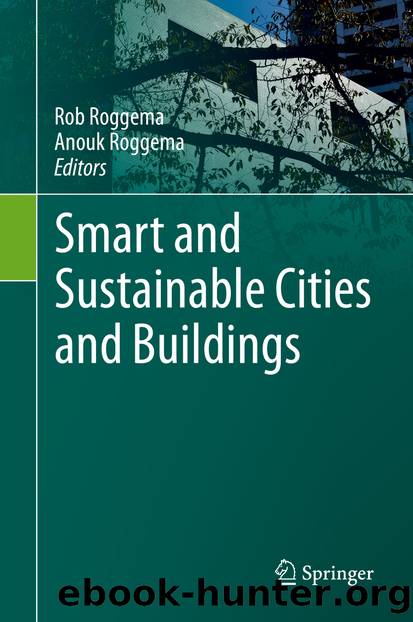Smart and Sustainable Cities and Buildings by Unknown

Author:Unknown
Language: eng
Format: epub
ISBN: 9783030376352
Publisher: Springer International Publishing
22.1.2 What Is Placemaking Practice
Placemaking is a worldwide practice focusing on the process of developing places through the active participation of the citizens that conceive, perceive and live in that place (Arefi 2014). It aims to create place attachment, a foundational concept of environmental psychology linked to positive outcomes in health, community participation (Anton and Lawrence 2014), civic behaviour, and perceptions of safety (Billig 2006). It is possible to conduct placemaking through formal (i.e. strategic placemaking) to informal (i.e. tactical urbanism) approaches. The key characteristics of a placemaking project are: (1) a process which puts emphasis on deep engagement with the community of an area; (2) the use of relatively small projects to trigger long-term benefits; and (3) the aim of improving life quality by developing social cohesion and place attachment that contributes to the planning and investment in public places (Kyle et al. 2004).
There is strong evidence (over five studies) that placemaking can foster place attachment in increasingly dense, diverse and mobile communities (Hidalgo and Hernandez 2001; Lewicka 2010; Scannell and Gifford 2010). The strengths of placemaking lie in its adaptiveness to context, its ease and often affordable ways to reimagine spaces (PPS n.d.). Successful placemaking efforts are often community-led or have undergone extensive community engagement, where the ‘placemakers’ take the time to build a relationship with the people of that area. In many ways, the placemaker role is to provide a safe space for the community to voice their opinions and needs, and subsequently work with them to come up with key initiatives.
Placemaking is simultaneously a process (of community engagement) and a product (which may or may not be a design). It can be a time-consuming practice in which trained facilitation, communication, and listening skills are critical. Because time is often limited, placemaking projects can easily be superficial in their engagement, and thus fail to achieve the intended long- term benefits and can contribute to inequality and gentrification across communities (Fincher et al. 2016). What is needed is a way to think long term to integrate the ecological, or non-human aspects, and to develop capacity over time for the place; to strengthen not only itself and its stakeholders, but the broader systems on which it relies.
Download
This site does not store any files on its server. We only index and link to content provided by other sites. Please contact the content providers to delete copyright contents if any and email us, we'll remove relevant links or contents immediately.
Hit Refresh by Satya Nadella(8338)
When Breath Becomes Air by Paul Kalanithi(7264)
The Girl Without a Voice by Casey Watson(7263)
Do No Harm Stories of Life, Death and Brain Surgery by Henry Marsh(6336)
A Court of Wings and Ruin by Sarah J. Maas(6076)
Hunger by Roxane Gay(4218)
Shoe Dog by Phil Knight(4167)
Everything Happens for a Reason by Kate Bowler(4067)
A Higher Loyalty: Truth, Lies, and Leadership by James Comey(4033)
The Rules Do Not Apply by Ariel Levy(3906)
Tuesdays with Morrie by Mitch Albom(3832)
The Immortal Life of Henrietta Lacks by Rebecca Skloot(3826)
How to Change Your Mind by Michael Pollan(3679)
Millionaire: The Philanderer, Gambler, and Duelist Who Invented Modern Finance by Janet Gleeson(3569)
All Creatures Great and Small by James Herriot(3516)
Elon Musk by Ashlee Vance(3455)
Tokyo Vice: An American Reporter on the Police Beat in Japan by Jake Adelstein(3440)
Man and His Symbols by Carl Gustav Jung(3315)
The Money Culture by Michael Lewis(3284)
